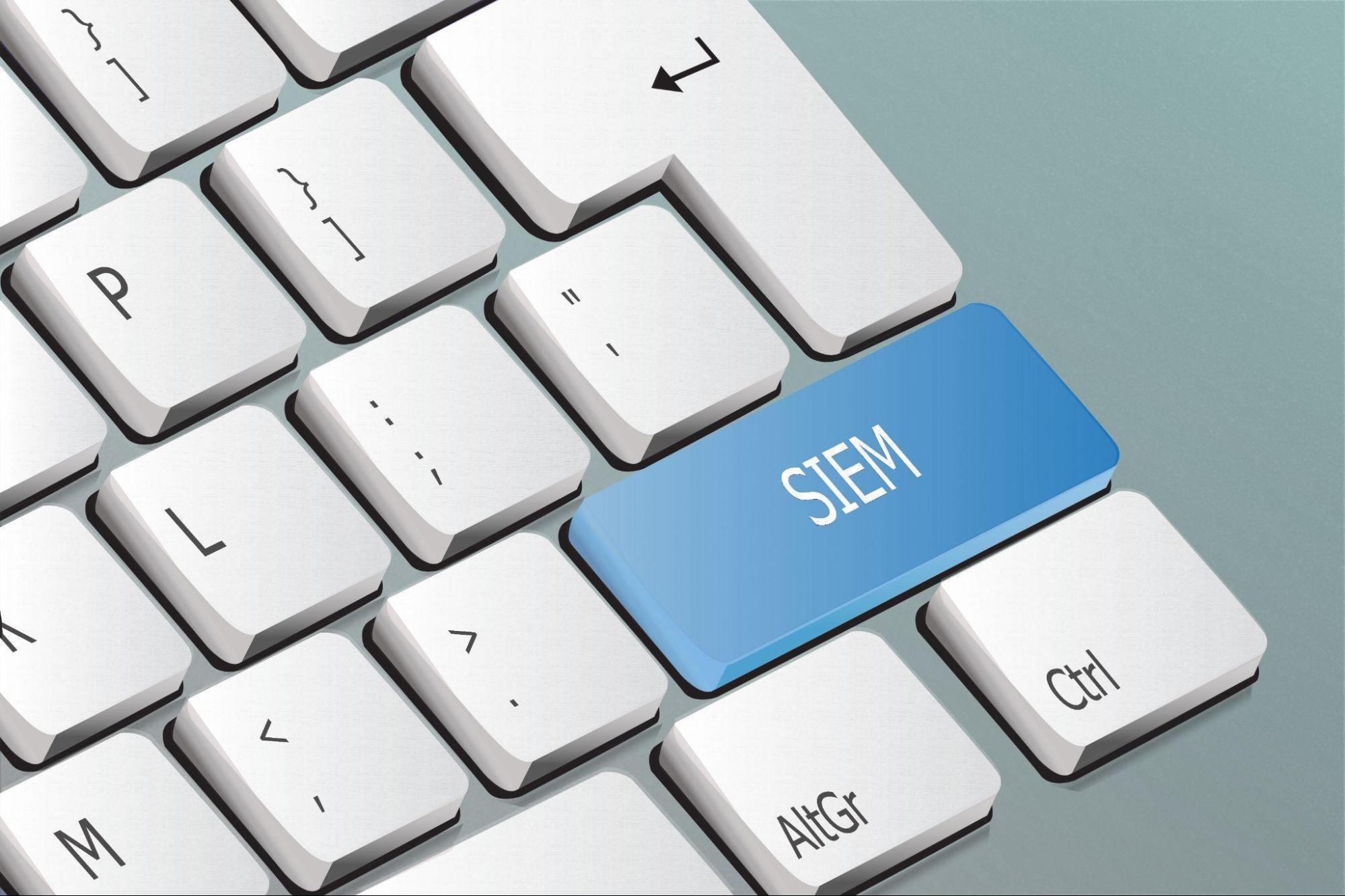table of contents
What is SOAR?
Three elements that make up SOAR
Why is SOAR attracting attention?
Differences between SOAR, SIEM, and XDR
Key benefits of implementing SOAR
Things to note when implementing SOAR
The appeal of NDR “Darktrace” that users considering SOAR should know about
summary
SOAR is a security solution that works with various security devices handled by companies and organizations to automate and streamline threat detection, analysis, and response when incidents occur.
In recent years, cyber-attacks have become even more ferocious, and there is a shortage of domestic security personnel capable of dealing with increasingly sophisticated threats. Therefore, SOAR , which supports SOC operational efficiency, is attracting attention as a solution to efficiently counter cyber attacks with limited resources .
In this article, we will explain the characteristics of SOAR, the background why it is attracting attention, its mechanism, and the benefits and points of introducing it.
▼What you can learn from this article
- SOAR is a security system that collaborates with multiple security devices to streamline and automate threat analysis and incident response.
- It is attracting attention due to the shortage of security personnel and the increase and the sophistication of cyber attacks.
- There are three main components: automation and collaboration (SAO), incident management (SIRP), and threat information management (TIP).
- Introducing it not only improves business efficiency, but also enables higher-level threat analysis and response involving the SOC to be operated at a uniform level.
Additionally, for users who are interested in SOAR but feel that there are high hurdles to implementing it, we recommend Darktrace , a network monitoring solution provided by M Autex.
They have in common the ability to monitor a wide range of areas and improve work efficiency and security accuracy, but they also have the advantage of not requiring detailed rule definitions or detailed settings, and are easy to implement.
Please see the page below to learn about the challenges and benefits that Darktrace can solve.
What is SOAR?

SOAR is an abbreviation for Security Orchestration, Automation and Response, and it refers to security solutions and concepts that aim to improve the efficiency and sophistication of an organization’s security management and operations.
This is a term proposed by Gartner.
- Security automation and coordination (SAO)
- Incident Response Management (SIRP)
- Threat Intelligence Information Management (TIP)
is an integrated concept.
By implementing SOAR, it is possible to integrate and manage “threat information” collected from various security devices within an organization and external services into a single platform.
In addition, by linking security devices at each layer based on the acquired threat information, it is possible to automate routine tasks that were previously handled manually (information collection, investigation of the scope of impact, primary response, etc.). You can also.
▼Comparison between implementing and not implementing SOAR
By introducing SOAR, organizations can aim to build a higher-level security system while making up for the lack of security human resources. In general, threats are analyzed and responded to using SOAR based on advanced judgments made by the SOC.
Three elements that make up SOAR
Three elements that make up SOAR
- Security automation and coordination (SAO)
- Incident Response Management (SIRP)
- Threat Intelligence Information Management (TIP)
can be given. Basically, anything that has this element falls under SOAR.
1. Security Automation and Alignment (SAO)
SOAR can be linked with various security tools (e.g. firewalls, SIEM, endpoint protection tools, etc.) operated within companies and organizations.
By making it possible to link individual security tools, which was previously difficult due to differences in log formats and vendors, it is now possible to collect and analyze logs across tools.
SOAR also automates routine tasks such as collecting and analyzing log information and prioritizing alerts when threats are discovered. Specifically, automation is achieved by incorporating the steps for an incident that is expected to occur into a digital workflow called a “playbook.”
2. Incident Response Management (SIRP)
SOAR allows information related to incident response (incident response flow, information sharing with related parties, etc.) to be managed and operated on the same platform.
For example, by checking SOAR, you can understand the incident response status of security personnel, and you can also securely communicate with related parties on the platform.
3.Threat Intelligence Information Management (TIP)
With SOAR, it is possible to centrally manage “threat information” collected from various security devices within an organization as well as external public information and various services.
By normalizing and analyzing the data collected through threat information management, more useful incident information can be used for SOC incident response, security device automation, etc.
Additionally, each time you conduct incident analysis, you can acquire “incident information unique to your company,” making it possible to implement more advanced security coordination and countermeasures that are appropriate for your company’s environment.
Why is SOAR attracting attention?

The reasons why SOAR is attracting attention are as follows.
- Lack of security personnel
- Increase and sophistication of cyber attacks
- Changes and diversification of work styles
1. Lack of security personnel
The first reason why SOAR is attracting attention is the lack of security personnel.
According to a survey released by the Ministry of Internal Affairs and Communications on the “sufficiency of human resources for security measures”, more than 80% of companies in the United States and Singapore answered that they had sufficient human resources, while approximately 90% of Japanese companies responded that there was a “shortage of human resources. ”
▼About the sufficiency of security human resources
Possible reasons include “difficulty securing the time necessary to train security personnel” and “lack of career paths for security personnel.”
However, as the number of incident logs and security devices increases year by year, it is becoming increasingly difficult for a small number of security personnel to manage systems using traditional methods.
2. Increase and sophistication of cyber attacks
The second reason why SOAR is attracting attention is that cyber attacks have been on the rise in recent years.
According to the 2022 Information and Communications White Paper released by the Ministry of Internal Affairs and Communications in 2022, the number of cyberattack-related communications observed by the Large-Scale Cyberattack Observation Network (NICTER) in 2022 was approximately 522.6 billion packets .
Compared to approximately 63.2 billion packets in 2015, you can see that the number has increased by 8.3 times .
▼Trends in the number of communications related to cyber attacks on NICTER Source
Furthermore, the methods of cyberattacks are becoming more sophisticated and complex every year, making early detection more difficult than before.
In order to properly use multiple devices to deal with a large number of threats and to stop incidents before they occur, it is essential to have a solution that unifies threat monitoring and analysis in all areas and can also handle automatic responses.
Differences between SOAR, SIEM, and XDR

SIEM is a security concept and tool that is often compared to SOAR.
SIEM is an abbreviation for Security Information and Event Management, and it is a security system that enables real-time threat detection by centrally collecting and analyzing log information from security devices and network devices.
Although they have in common that they collect and analyze logs from other devices , they differ in that SIEM focuses on threat detection, while SOAR focuses on automating security operations in general.
Based on SIEM, SOAR has a function that can ” automate the primary response when an incident occurs through collaboration,” and is said to reduce the number of man-hours for security staff and homogenize work quality, which was an issue with SIEM. It is being said.
SOAR and SIEM are often introduced at the same time, and by linking the two, it is possible to achieve a higher level of security
Additionally, XDR (Extend Detection and Response) is a security concept that aims to efficiently and highly detect and respond to threats by collecting and analyzing log data related to all areas such as servers, endpoints, and the cloud.
XDR and SOAR have many common features, such as event management, security device coordination, and automation. There is no clear difference, but the difference is that XDR focuses on more advanced threat detection and response, and assumes manual threat hunting by analysts.
Key benefits of implementing SOAR

There are multiple benefits to implementing SOAR, but we will introduce three representative ones.
- Reduces the burden of security operations
- Alert management becomes easier
- Easier to manage work quality
1. Reduces the burden of security operations
SOAR allows the operation of multiple security devices to be consolidated into one platform, reducing operational man-hours. The ability to automate the collection of logs from security devices, alert notifications, threat determination, primary response, and investigation of the scope of impact will also lead to a significant reduction in burden.
It will be a reliable ally for organizations suffering from a shortage of security personnel.
2. Easier to manage alerts
SOAR also makes it easier to manage notification alerts. Normally, security administrators are busy responding to hundreds or thousands of alert notifications, making them unable to respond appropriately to threats and unable to devote time to other tasks.
SOAR allows many security tools to be integrated into the same platform, making it possible to collect and analyze logs across tools. The triage feature also reduces the amount of effort required to manage unrelated alerts.
3. Uniform work quality can be achieved
With SOAR, by registering response procedures in a playbook in advance, anyone can respond to incidents using the same procedures and quality.
Many traditional security tools respond to incidents on a case-by-case basis, and depending on the skills of security personnel, it may not be possible to respond appropriately. With SOAR, you can automatically respond to incidents according to playbooks, so you can standardize the quality of work and implement high-level security measures, regardless of the skills and experience of the person in charge.
Things to note when implementing SOAR

As mentioned above, SOAR has many benefits in helping organizations improve their security level and resolve resource shortages.
On the other hand, there are some precautions and concerns when implementing SOAR, and organizations need to consider the use of SOAR while considering their current situation.
▼Notes when implementing SOAR
- Concerns about implementation costs
- Difficulty in transitioning from individualized processes
- Difficulties in building an operational system
- Concerns about the complexity of security systems
The first concern is the high hurdles to implementing SOAR and getting operations on track . Not only does the product itself tend to be expensive, but organizing SOAR business processes, designing automation scenarios, and building environments requires a high level of specialized knowledge, skill, and time.
Compatibility with the current security environment is also required, and depending on the product, it may be difficult to integrate it with the security equipment your company uses.
When considering the introduction of SOAR, it is important to note that it takes a long time and resources to be able to utilize all the functions, and that it takes a lot of time and resources to build the optimal environment step by step, and that it takes time and effort from other departments within the company to complete the process from implementation to operation. It is important to keep in mind in advance that cooperation and collaboration between parties are essential.
The appeal of NDR “Darktrace” that users considering SOAR should know about

- I am interested in “SOAR” which promotes business efficiency and highly accurate threat response.
- However, there are high hurdles due to issues such as internal resources and implementation period.
What such users would like to know about is Darktrace, a security solution that, like SOAR, comprehensively monitors all security areas and promptly detects anomalies .
Rather than collecting information from multiple devices, it is possible to quickly detect abnormalities by monitoring communication packets (traffic) from Darktrace itself to all areas.
In addition to the entire network, a wide range of digital environments such as cloud, telework, email, and SaaS environments can be comprehensively monitored with a single device, making it possible to quickly detect and take countermeasures against any threats. Through threat analysis, dangerous communications are even automatically blocked.
In addition, there is no need to define rules or make detailed settings at the time of implementation, and there is no impact on existing systems or security devices . It is possible to eliminate hurdles.
Furthermore, Darktrace is a system that self-learns through communication analysis using AI machine learning and mathematical theory, detects unusual communication patterns, and responds to unknown threats. Since AI automatically determines and blocks threat levels, it has the advantage of being easy to determine threats and reducing management time .
▼A security check can be performed in as little as 3 minutes per alert after receiving an alert.Darktrace can
provide comprehensive and highly accurate security monitoring and operation with a single device, making it a reliable ally for security personnel who are struggling with a lack of in-house resources.
Please see below for details.
summary

In this article, we explained the mechanism and functions of SOAR, its benefits, and key points for implementation.
Summary of this article
- SOAR is a security system that collaborates with multiple security devices to streamline and automate threat analysis and incident response.
- It is attracting attention due to the shortage of security personnel and the increase and sophistication of cyber attacks.
- There are three main components: automation and collaboration (SAO), incident management (SIRP), and threat information management (TIP).
- Introducing it not only improves business efficiency, but also enables higher-level threat analysis and response involving the SOC to be operated at a uniform level.
By introducing SOAR, it becomes possible to respond to incidents in a uniform manner while reducing the operational burden, making it possible to implement advanced security measures even when there is a shortage of security personnel.
We hope that this article will help you understand SOAR better and that it will be helpful for your implementation.